Eight days, eight tracks, 3,500+ miles and 18 competitive events – all on a single set of Goodyear Eagle F1 SuperCar 3 tires. The 2025 Tire Rack One Lap of America pushed man and machine to their limits, and our Dodge Charger Daytona Scat Pack rose to the challenge. Finishing 39th overall in a field of 82 vehicles – many of them re-purposed track cars or heavily modified street cars – we finished 4th in the Alternative Fuel class and an impressive 3rd place overall in the bracket drags.
Those numbers only tell part of the story.
Our One Lap journey began at Tire Rack’s Headquarters in South Bend, Indiana. The wet skid pad was a great place to kick things off and establish ourselves with a solid 39th overall, with an average of .791 G’s on the soaking wet pavement, and only .1 G away from the top spot.
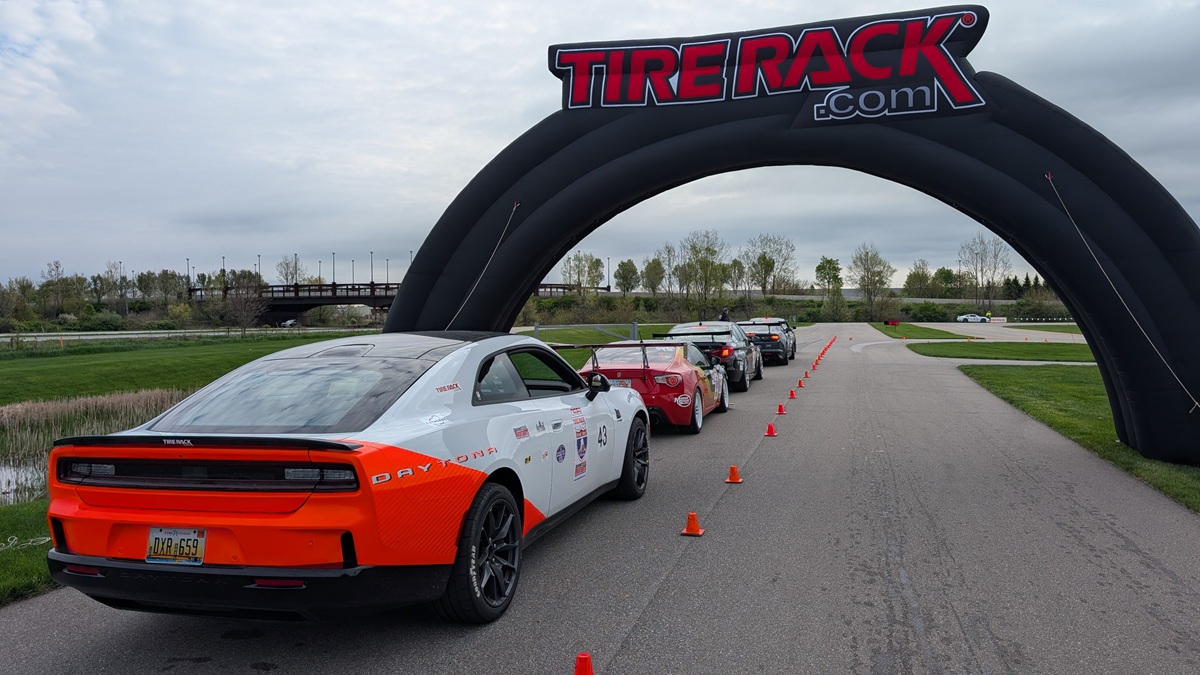
Day 2 took us to the first Road Course event at World Wide Technology Raceway in Missouri, where David immediately showcased the Charger’s road course capabilities with a 33rd place finish. Day 3 at Hedge Hollow’s 3.2-mile circuit is where we started to adapt how we attacked the track to maximize performance – “rolling more speed into corners, using the curbs, lifting off throttle sooner” – Our pilot and Dodge engineer, David Carr, found seven seconds of improvement between sessions at Hedge Hollow and the strategies we implemented there carried over for the rest of the week.
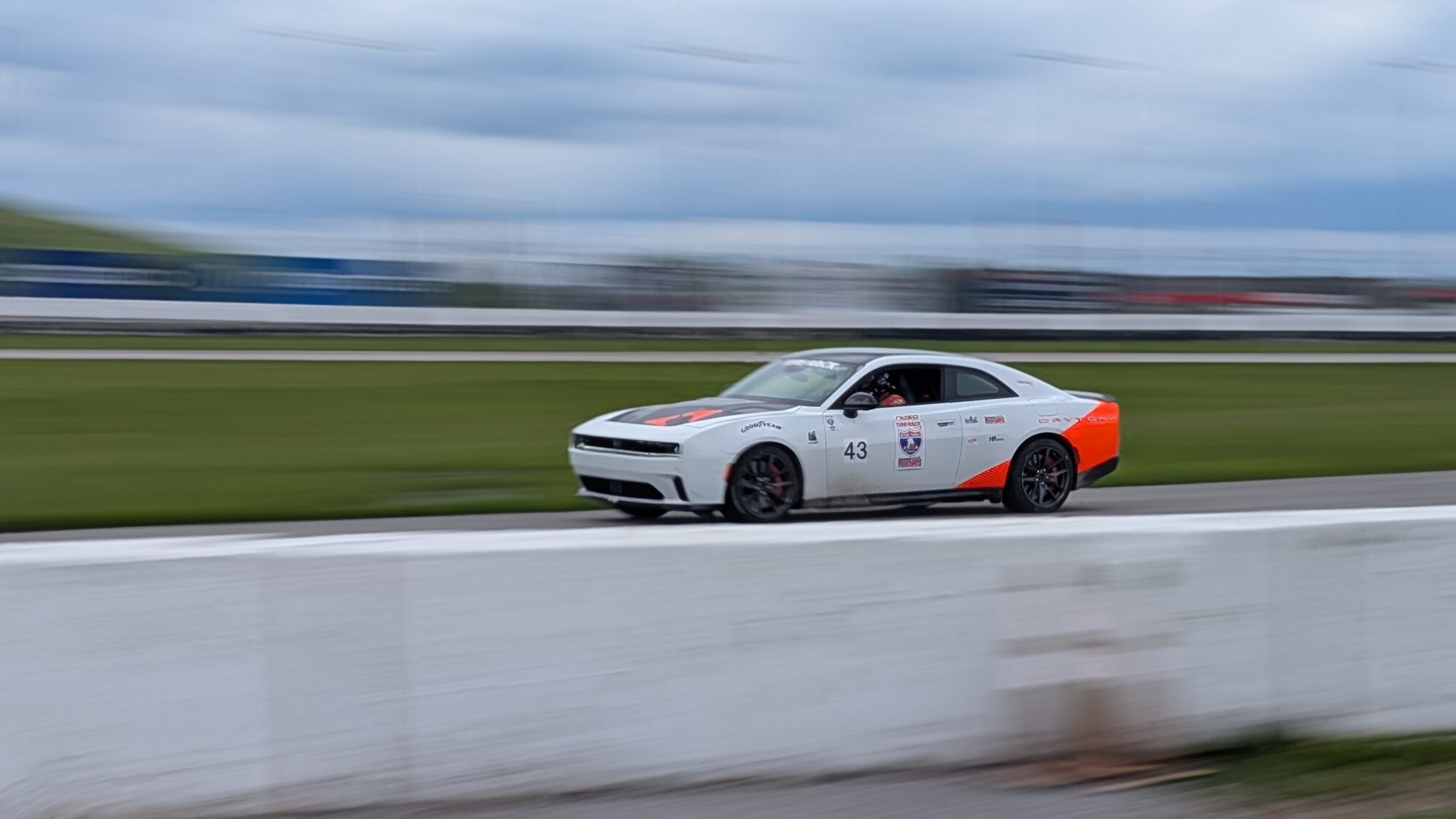
At the National Corvette Museum, David’s strategic use of curbs to rotate the rear of the car and get the rear tires working harder placed us 41st overall, just 0.9 seconds behind our closest class competitor. Virginia International Raceway’s challenging 3.27-mile course highlighted the Charger’s sophisticated suspension system with impressive runs through the notorious Climbing Esses and high-speed off-camber sections of the track.
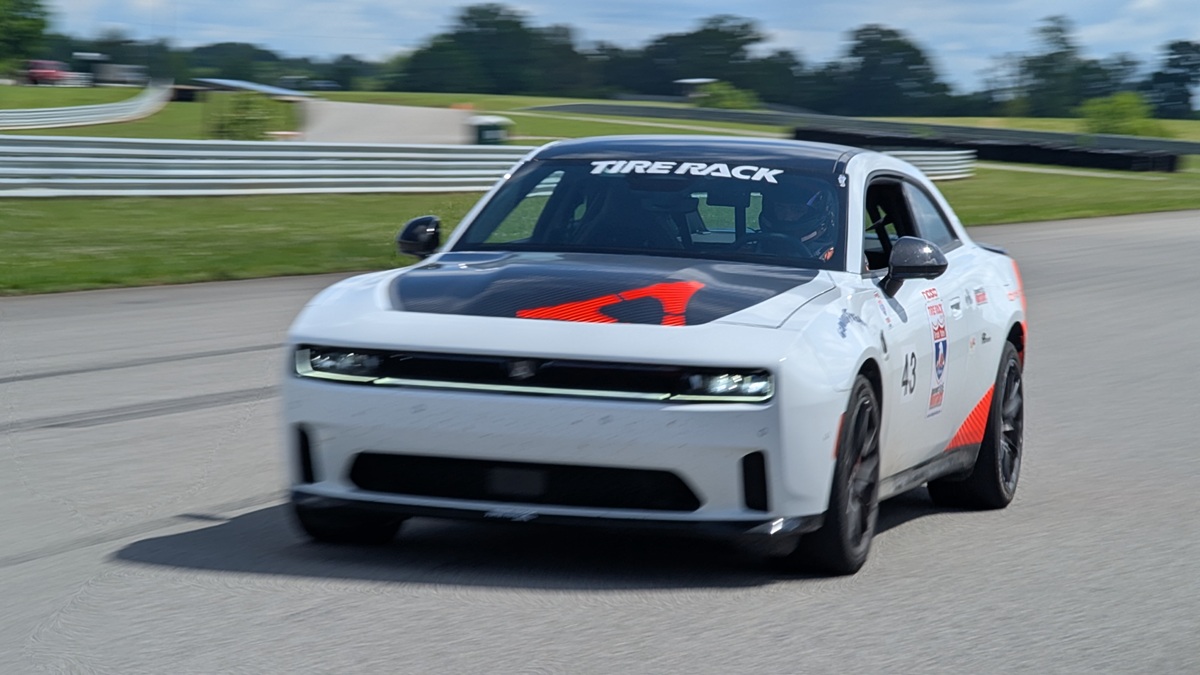
Pit Race International Raceway saw us secure another 39th place finish despite some interesting challenges. One Day 7, Grattan Raceway gave us a bit of “Home Field” advantage with David’s considerable track time, and we achieved our best result – 26th overall, handily outperforming our closest competitor in the Alternative Fuel class. The shorter 1.6-mile layout played to the Charger’s strengths, allowing for better battery conditioning and more aggressive driving.
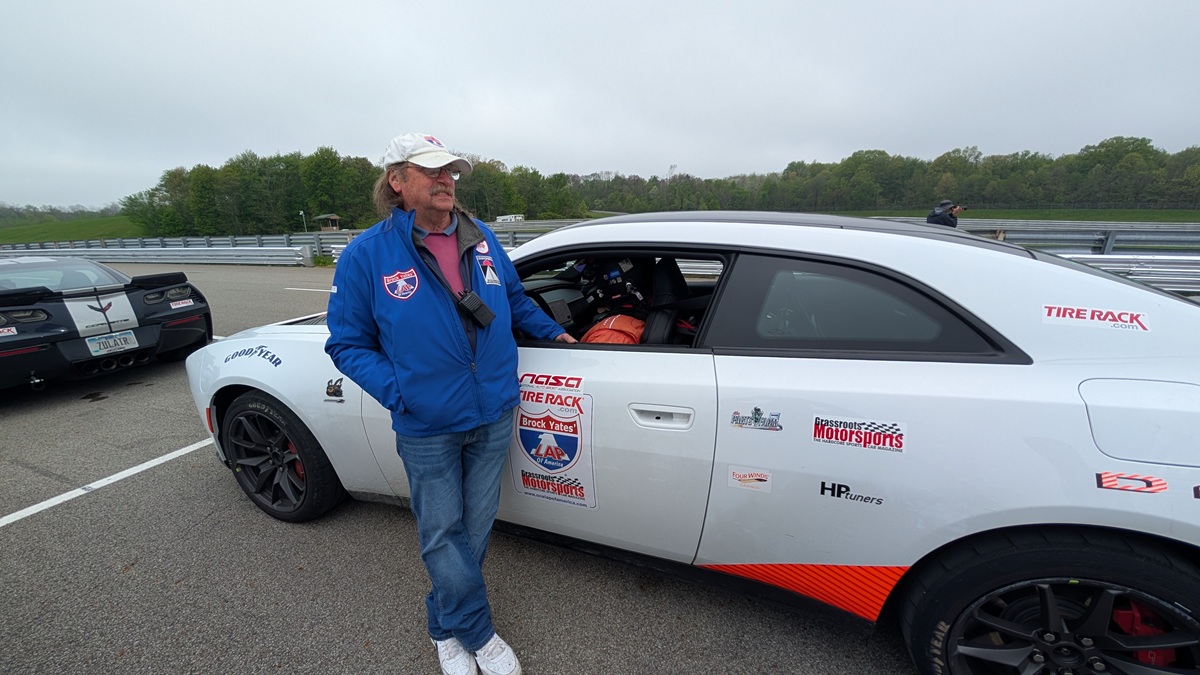
The drag strip competition proved to be one of our strongest showings. Not surprising with the consistency of our Charger’s EV driveline and our surprisingly simple approach. We went with a “don’t do anything fancy” approach, literally foot-brake it, put a little throttle in it and pay attention to how fast we were running down or being run down to know when to lift or give it a little brake pedal. This approach carried us through six rounds of bracket racing to a 3rd place finish overall. We were eliminated by the eventual overall event winners by a mere 0.004 seconds. So close!
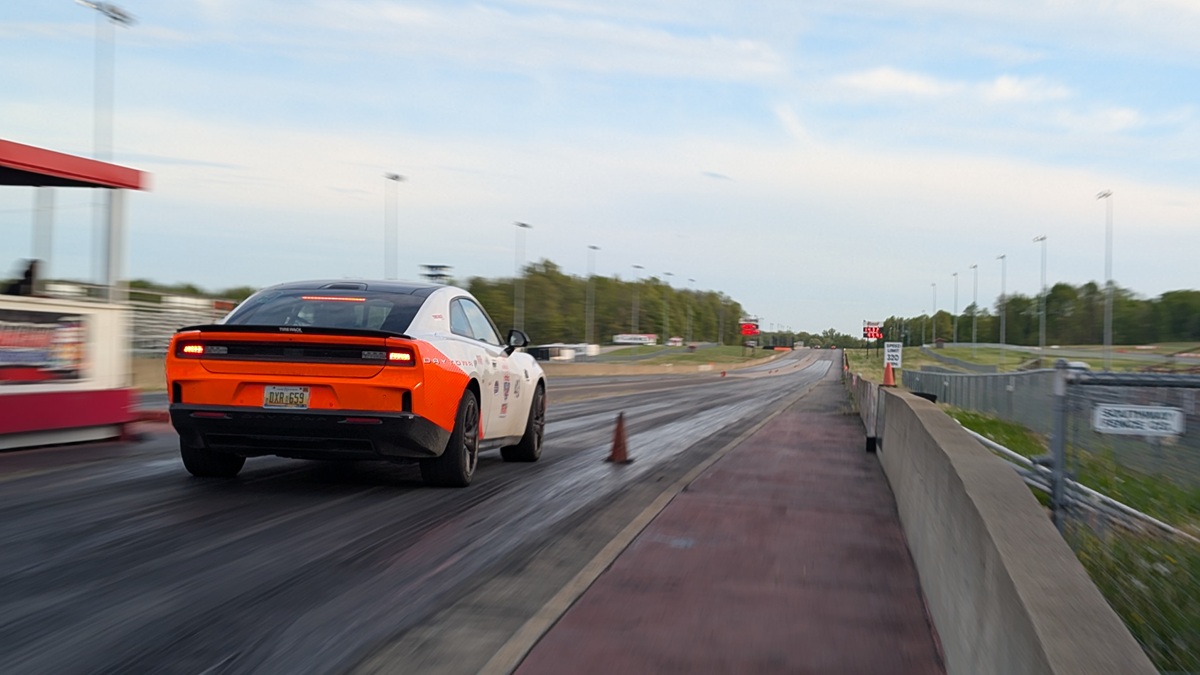
The event concluded with the dry skid pad test at Tire Rack, where the Charger pulled an impressive 1.01G running on eight-day-old, well-worn tires. “A rather amazing number for any vehicle with a stock alignment and properly abused tires,” we noted. “It’s almost like the chassis development team knows what they’re doing.” They do! They REALLY do!
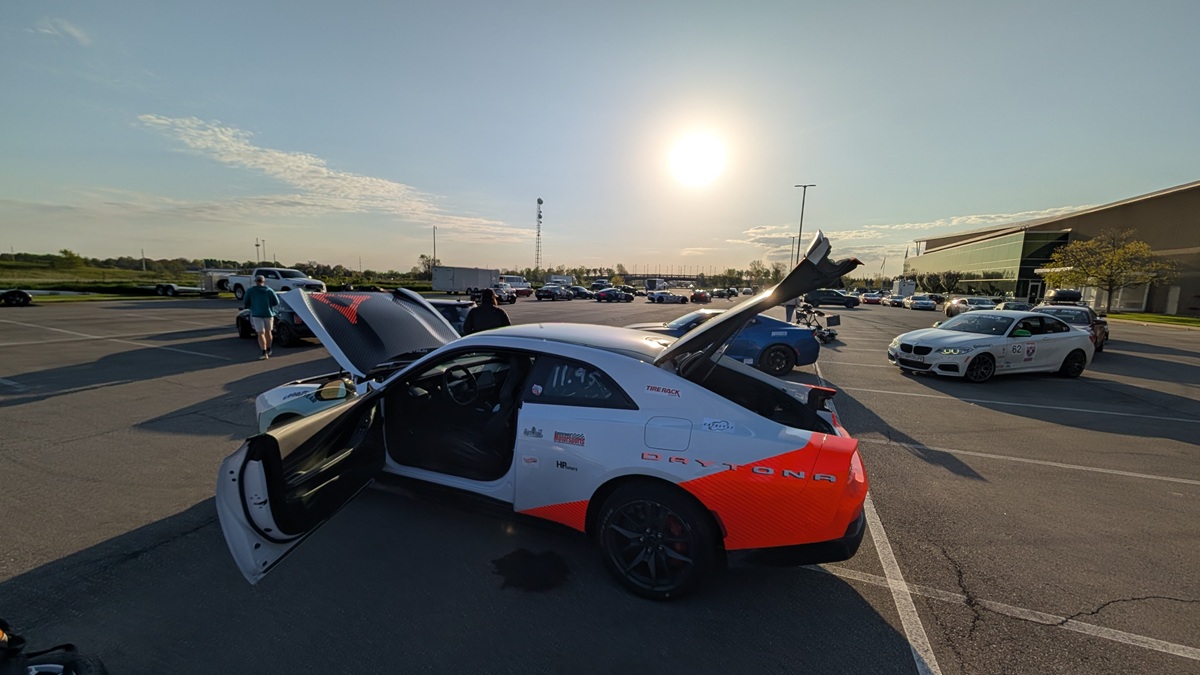
The transit stages between tracks presented unique challenges and unexpected joys. Nine-hour drives stretched a bit as we managed charging stops, keeping the battery in the optimal 20-80% range for optimal charging time. The necessary detours led to some of the trip’s most memorable moments. A search for efficient charging led us down back roads to “a little store out in the middle of nowhere in Missouri,” complete with metal sculptures from 10-foot-tall roosters to dinosaurs and giraffes. At a Flying J truck stop, a family of four examined every aspect of the charging Charger, from the ambient lighting to the performance pages, the unique “squircle” steering wheel, and more.
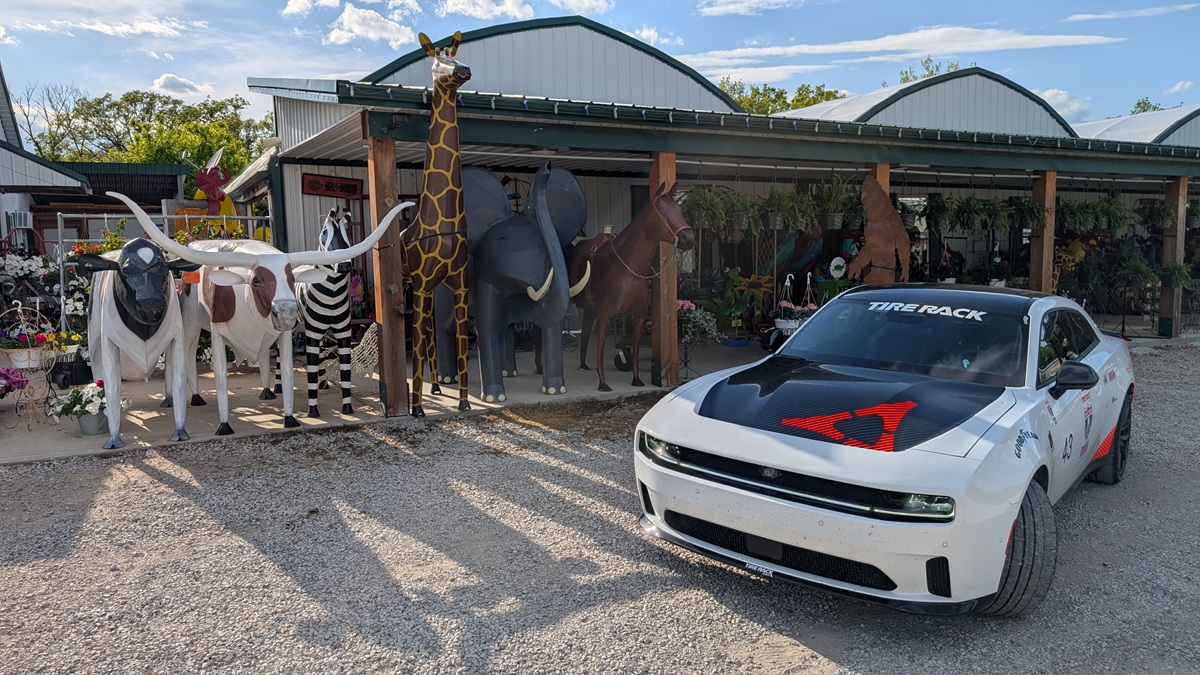
The continuously variable dampers provided impressive ride quality on and off track. I thought it would feel a bit stiff on the highway as a compromise to deal with the extra weight of the battery pack when on track. We were consistently amazed at how composed/quiet the Charger was on the highway. The Goodyear Eagle F1 SuperCar 3 tires maintained their integrity and ride quality throughout, despite the abuse of eight straight track days.
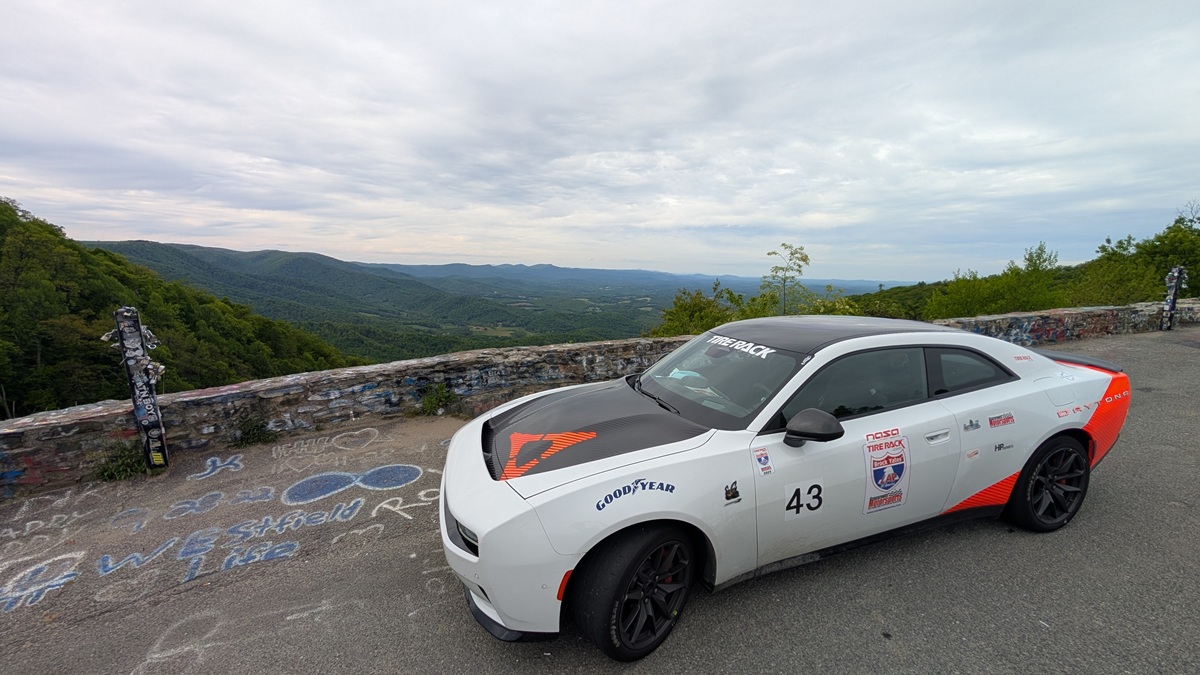
Even law enforcement showed interest: “Police showed up at 2:30 am at one of our stops… Their first questions were ‘Is that a new Charger?’ quickly followed by, ‘I didn’t know it was an EV!'” These interactions highlighted One Lap’s grassroots, community aspect, where sharing enthusiasm with fellow car lovers becomes part of the experience.
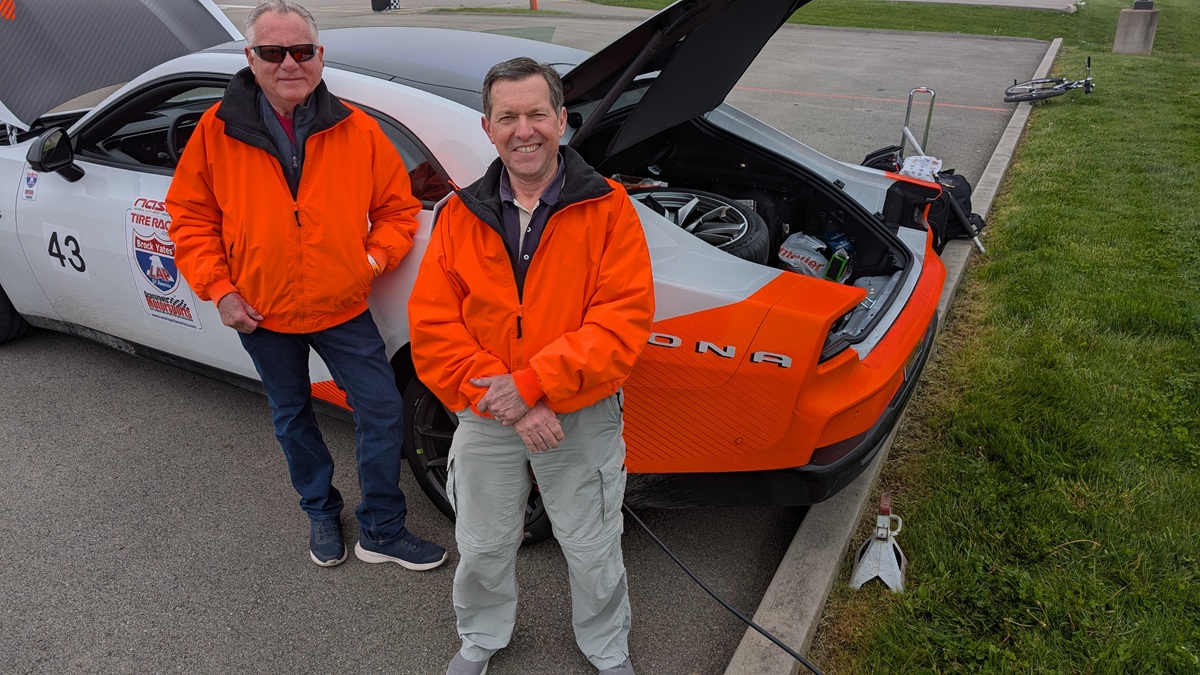
The human endurance aspect was equally challenging. Between track sessions at NCM and VIR, our team managed to grab a two-hour nap and a shower, making for a VERY long day. Luckily, the seats proved to be a great place to grab a nap during the transits. “What we had to do in order to keep the car rolling and be on time was slightly superhuman,” David noted. Competitors who initially joked “there’s no way they’re actually going to make it” quickly changed their tune when we showed up on time day after day!
“Being absolutely bone stock, the car performed better than most of our competitors believed it had any right to,” we concluded. “It was fast, enjoyable and easy to drive. The car did what it was designed to do. It’s a track-capable Dodge.” The Charger turned every head in the paddock and during our charging stops across the entire event. It put smiles on faces and inspired more than a handful of conversations ending with, “I want one!”
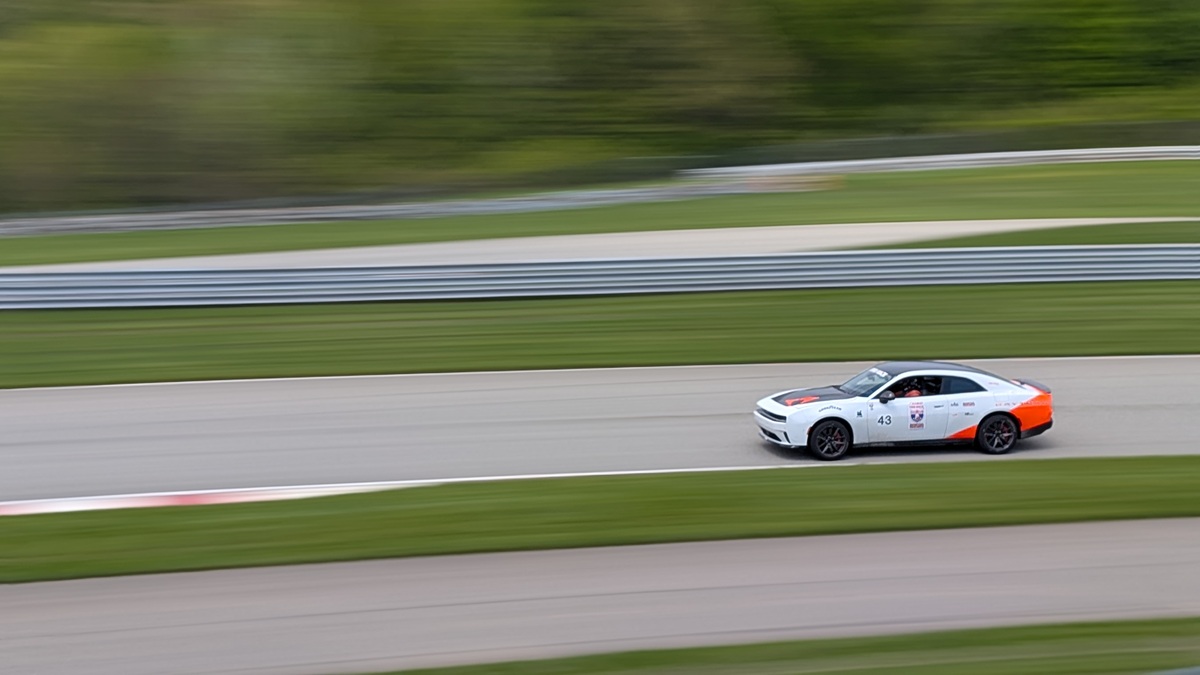
This would not be possible without the incredible organization behind the Tire Rack One Lap of America. Continuing the legacy of the original Cannonball Run, this event brings together an extraordinary community of automotive enthusiasts. The camaraderie among competitors was evident at every stop, with the Charger drawing crowds eager to learn about electric performance.
“I didn’t hear a bad word the whole time,” we noted. “The One Lap crowd was receptive to the car and wanted to know what makes it tick.” This openness to new technology – even from traditional performance enthusiasts – shows how One Lap continues to evolve while honoring its heritage.
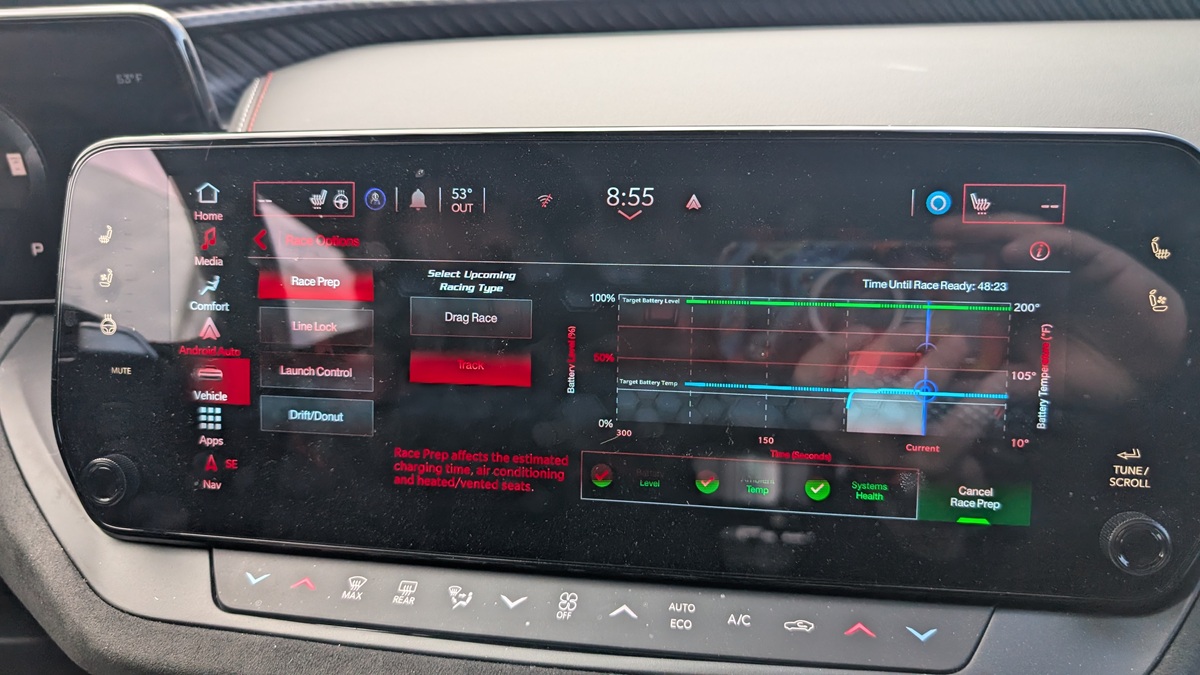
The event organizers’ meticulous planning and execution, from timing systems to safety protocols, allow competitors to focus on the challenge at hand. Their dedication makes this motorsport marathon possible year after year.
This One Lap of America experience hasn’t just been about pushing the limits of EV performance – it’s been about changing perceptions. “There are ways to tell this story and ways to actually start building positive vibes for EVs in general and for the Charger in particular,” we reflected.
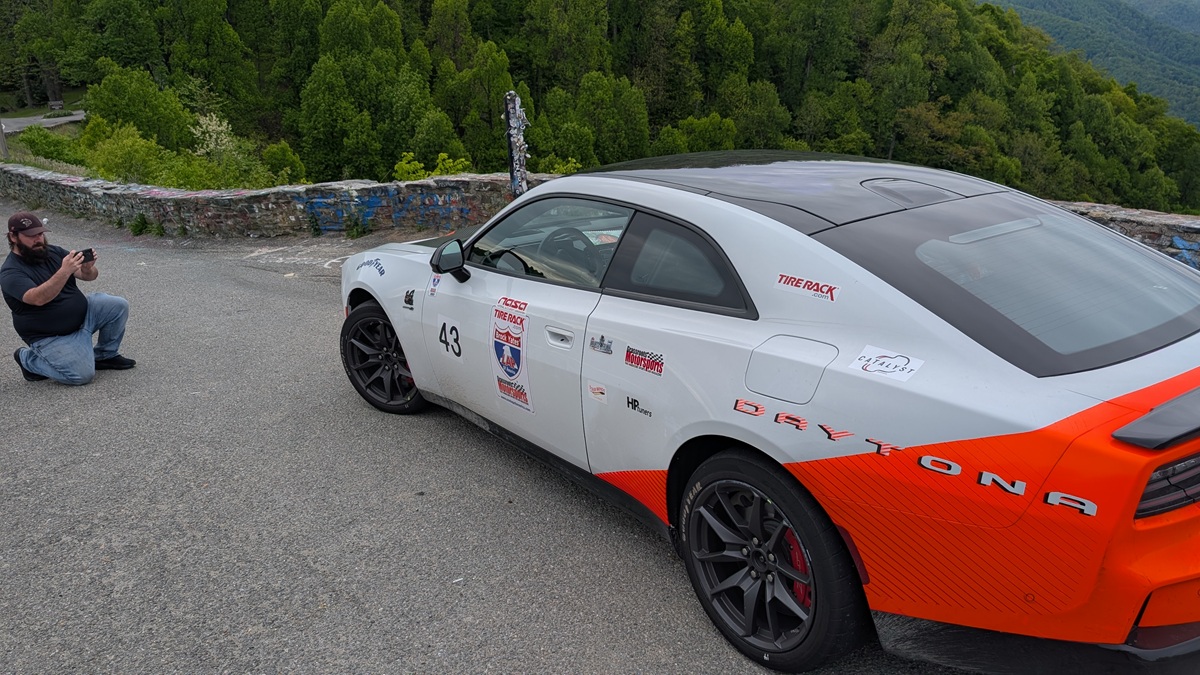
This thought popped out as David and I were wrapping up our conversation and reflecting on the entire event. “Whenever I’ve heard anyone say ‘EV bad’ and then not have anything meaningful to back it up with, I feel those are just empty words… How can you possibly have that attitude about it when you really don’t know?” After spending eight days straight in the Dodge Charger Daytona Scat Pack, it has elevated mine and countless others’ opinions of the new Charger as an EV.
What began as a test of endurance has evolved into something more significant – a blueprint for how electric performance vehicles can win hearts and minds, on track, on the drag strip, on the highway and turn every drive into a performance-packed adventure.
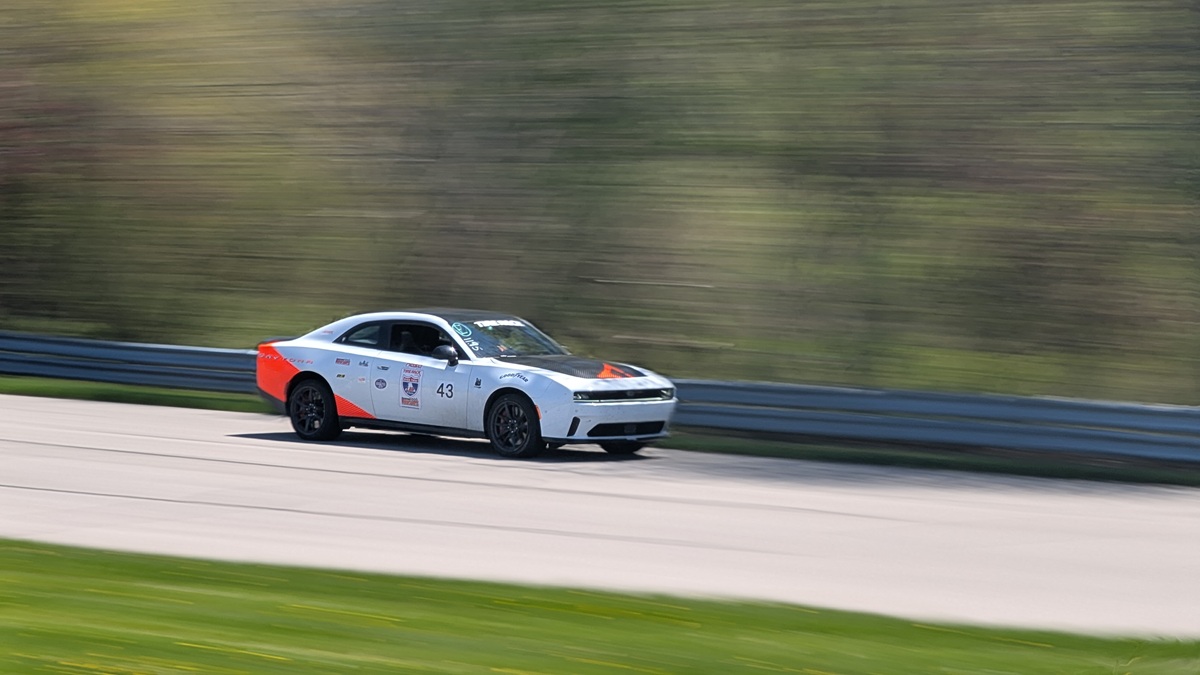
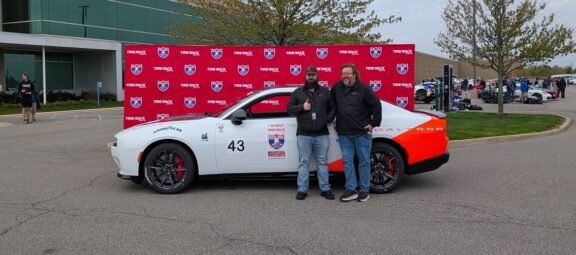
0 Comments